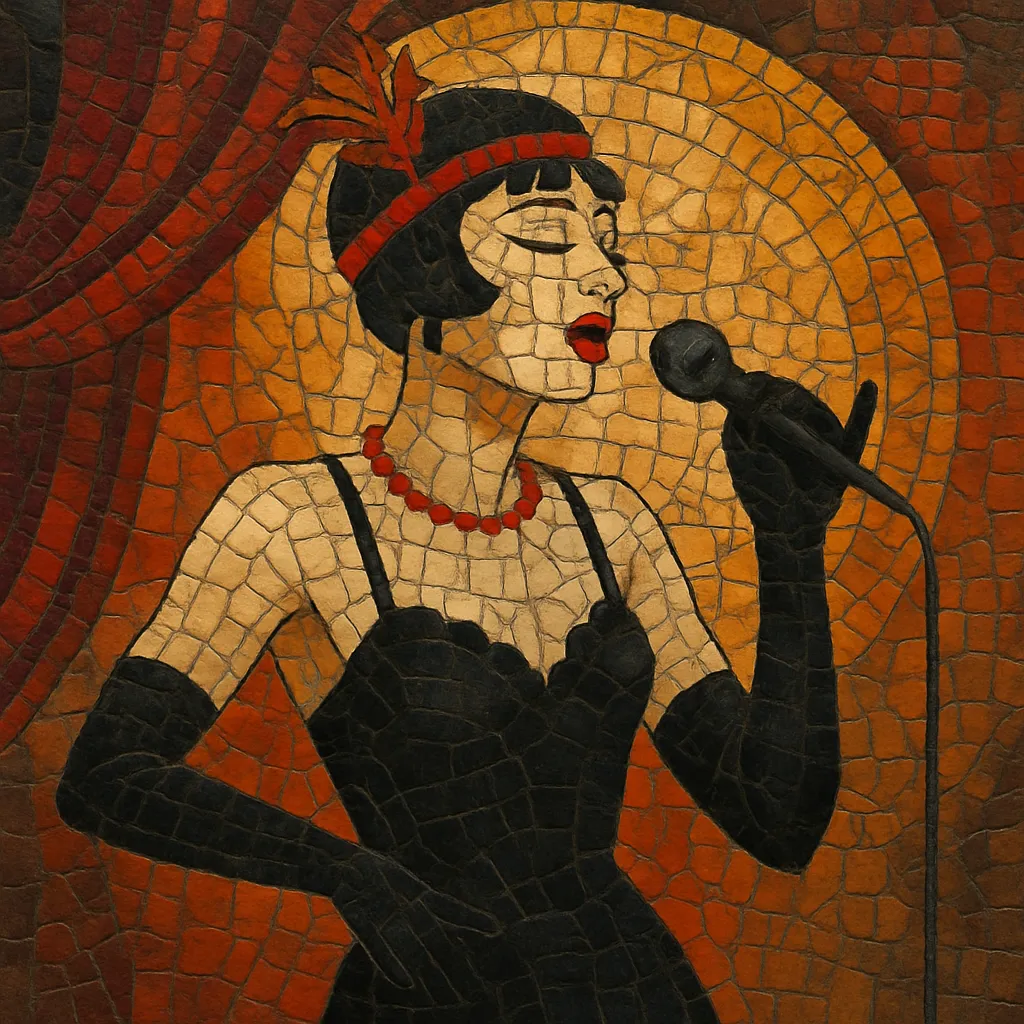Cabaret is an intimate form of stage entertainment centered on songs, witty monologues, satire, and character pieces, typically presented in small rooms with table seating and a master of ceremonies. Performers address the audience directly, and the atmosphere is conversational, risqué, and often politically or socially pointed.
Musically, cabaret blends the French chanson tradition with Weimar-era “Kabarett” and, later, American torch-song and jazz idioms. Arrangements are usually piano-led with small ensembles (accordion, violin, clarinet, upright bass, light percussion), supporting nuanced storytelling and dramatic delivery.
Vocal approaches range from parlando (speech-like) delivery to a smoky croon. Common grooves include waltz and musette-inflected 3/4, tango and habanera patterns, foxtrot, and slow blues; harmonies are tonal with chromatic color and expressive rubato. Lyrics favor irony, double entendre, longing, and social commentary.
Cabaret emerged in late-19th-century Paris, particularly in Montmartre with venues like Le Chat Noir (opened 1881). Drawing on the café-concert and chanson traditions, early stars such as Aristide Bruant and Yvette Guilbert popularized satirical, character-driven songs accompanied mainly by piano. The format emphasized proximity to the audience, spoken patter, and topical humor.
The model spread to German-speaking Europe as “Kabarett,” thriving in Berlin, Munich, and Vienna. Weimar-era cabaret sharpened political critique and social satire, with writers and composers such as Bertolt Brecht and Kurt Weill creating repertoire that fused theater and song. Venues like Schall und Rauch and Kabarett der Komiker became hubs for cutting commentary, dance rhythms, and theatrical song.
Cabaret crossed the Channel and the Atlantic into British music halls and American supper clubs. In New York and London, cabaret intersected with jazz and the Great American Songbook. Performers like Marlene Dietrich, Noël Coward, and Eartha Kitt brought a cosmopolitan polish, while French icons such as Édith Piaf sustained the intimate torch-song lineage in Parisian boîtes.
Totalitarian regimes suppressed political cabaret in the 1930s; many artists emigrated to Paris, London, and the United States, reshaping local scenes. Postwar, cabaret persisted in Paris and experienced periodic revivals, notably through Lotte Lenya’s championing of Weill and later through Ute Lemper’s Weimar rediscoveries in the 1980s–1990s.
Cabaret remains a living, cross-genre practice: from classic chanson-style clubs and New York cabaret rooms to festival circuits and queer, burlesque-informed revivals. New offshoots like dark cabaret adopt theatrical, gothic aesthetics while preserving the genre’s core: intimate storytelling, sharp wit, and direct audience engagement.
Start with a piano-led arrangement; add small-ensemble colors as needed: accordion (for musette/tango inflections), clarinet or violin for lyrical lines, upright bass, and a light drum kit or brushes. Keep textures transparent to showcase the voice and text. Plan space for an emcee or for the singer’s patter.
Use tonal foundations enriched by chromaticism: secondary dominants, borrowed chords (iv in major, bVI, bVII), and occasional modal mixture to darken torch songs. Favor singable, speech-contoured melodies with expressive leaps at climaxes; allow rubato and cadential ritardandi to frame key lyrical moments.
Alternate among cabaret-friendly feels: 3/4 waltz/musette, tango or habanera for sensual tension, foxtrot in 4/4 for lighter numbers, and slow blues for torch songs. Keep tempos moderate and flexible—shape phrases around the lyric rather than a strict metronomic pulse.
Write from a clear persona (confessional, satirical, world-weary). Employ irony, double entendre, and topical or social commentary. Use strong prosody (stress matches melody), tight rhyme schemes (AABB/ABAB), and memorable refrains. Interleave songs with brief patter to establish rapport and narrative continuity.
Craft dynamic arcs within sets (opener to draw in, mid-set showpiece, intimate ballad, witty closer). Modulate keys for emotional lift; spotlight instrumental interludes as character beats, not virtuoso displays. Emphasize diction, eye contact, and timing—audience interaction is part of the composition. Reference classic repertoire (e.g., Weill/Brecht numbers) judiciously to signal lineage without relying on pastiche.


